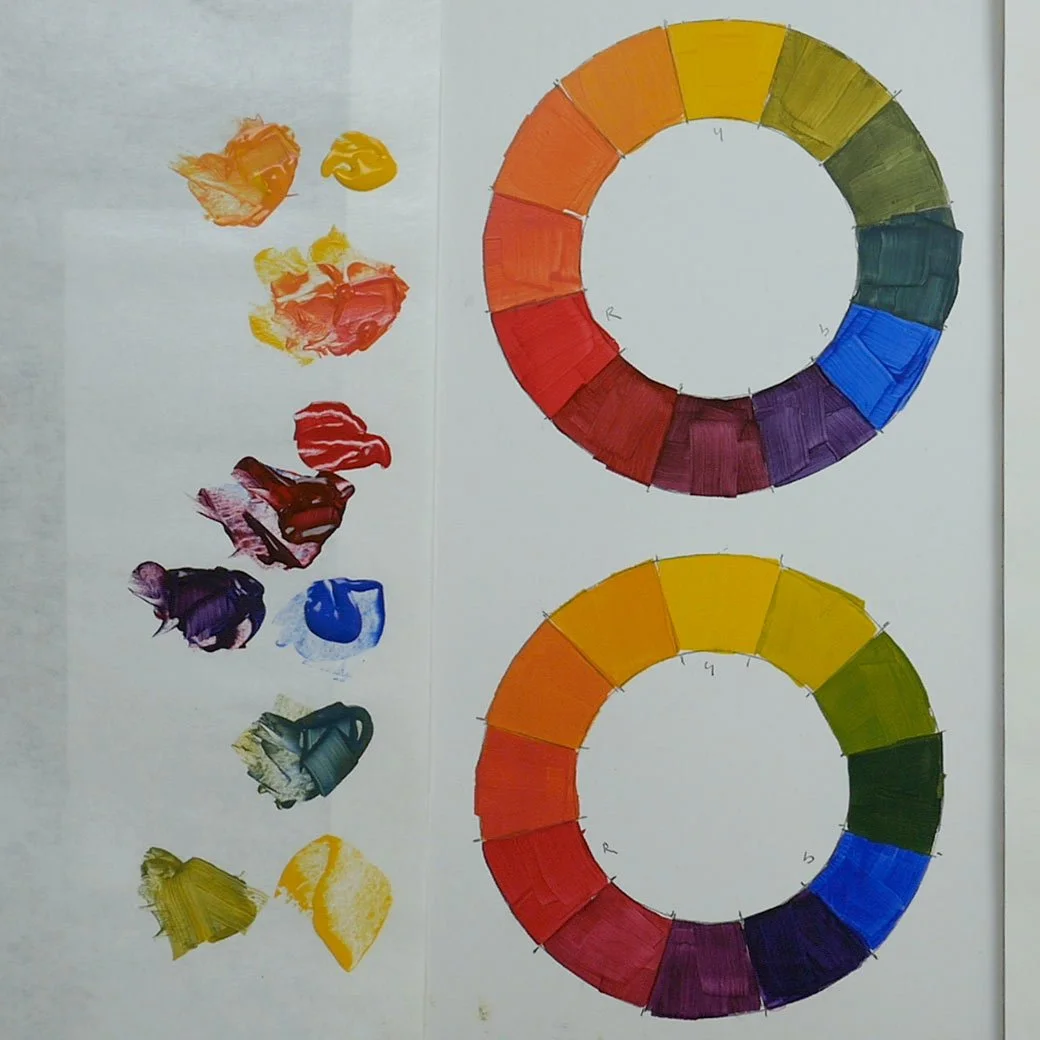How to Mute a Color with Todd M. Casey
You’re in the middle of a painting, you squeeze out some pigment and you realize that, oh no, the color is way too bright for what you need.
If you're in this situation, Ep.81 guest Todd M. Casey says it’s time to pull out your color wheel.
(image from Kelly Anne Powers’ studio)
A color wheel is made up of three main types of colors:
Primary Colors
These are the foundation: red, yellow, and blue. They are arranged in an equilateral triangle. They can’t be mixed from any other colors.
Secondary Colors
Sitting between each pair of primaries, secondaries are created by mixing them together: orange (red + yellow), green (yellow + blue), and purple (blue + red).
Tertiary Colors
These are the in-betweeners, showing how each secondary leans. One orange, for example, might tilt toward yellow, while another slides toward red.
Understanding this layout gives you a map for how to control color intensity, especially when you want to mute something that’s too bright.
Put it to Practice:
Knowing color wheel geography is going to help you when it comes to mixing muted down colors.
And it’s because of something called complements.
You can gray colors down with actual gray paint… or you can use a color’s complement. That’s the color that sits across from the color on the color wheel.
Common complements include:
Red and Green
Yellow and Purple
Blue and Orange
There are 12 spots on the color wheel, though, so the key is finding the right complement. Which red is opposite your green?
If you want to get a sense of what YOUR pigments can do, you can make your own color wheel.
Great question! Pull out your color wheel and find out. Your color wheel might not have EXACTLY the color of your paint tube, but you can get pretty close.
Now look across and see what color sits opposite of it. Try adding a bit of that color into your mix and you’ll find that it grays it down.
If you want to really understand what your pigments can do, make your own color wheel using your actual paints. You’ll learn which complements mute most effectively and how to control saturation every time you mix.


